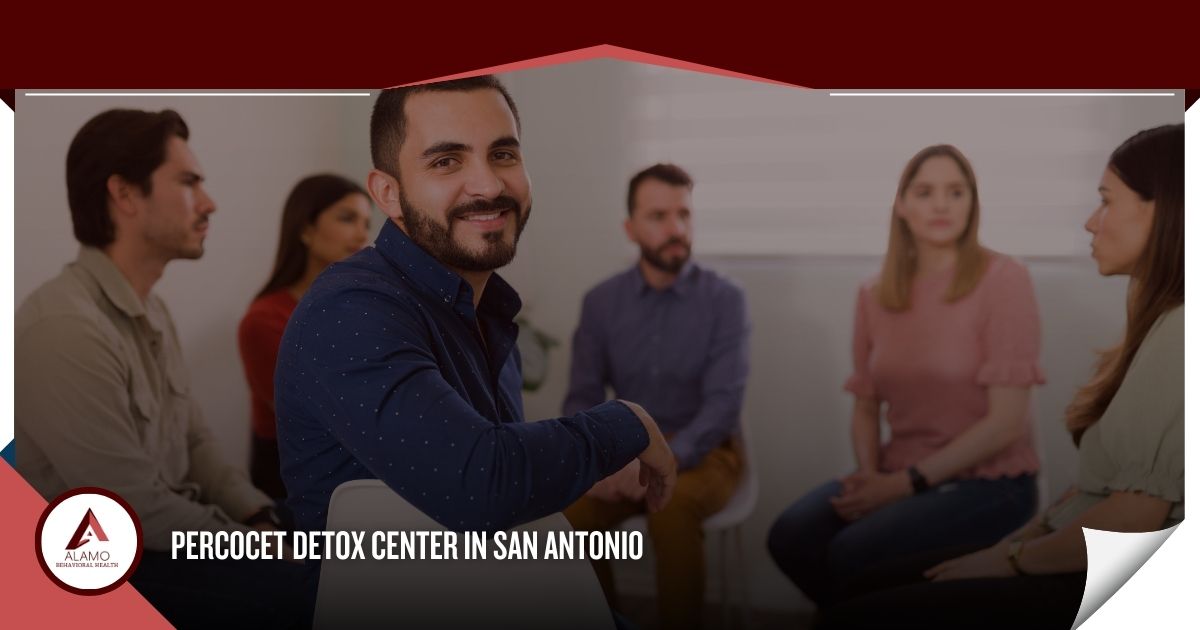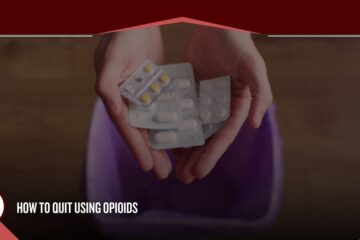Percocet is a prescription pain medicine used for alleviating moderate to severe pain, but it also comes with a high risk of addiction and dependency. One of the first steps of an addiction treatment program for most people is a medically supervised detoxification process.
At a Percocet detox center in San Antonio, there’s an emphasis on managing withdrawal symptoms safely and minimizing discomfort. Then, following detox, a combination of therapy approaches might be used to address the underlying causes of addiction to foster long-term recovery.
What Is Percocet and How Does It Work?
Percocet is a prescription medicine combining oxycodone, which is an opioid pain reliever, and acetaminophen, which is a non-opioid and pain reliever.[1] It’s found in over-the-counter drugs like Tylenol, and the combination makes Percocet very effective for managing moderate to severe and acute pain.
Oxycodone works by binding to opioid receptors in the central nervous system, which consists of the brain and spinal cord. These receptors transmit pain sensations throughout the body and to the brain. When oxycodone binds to these receptors, it changes how the body perceives pain and your emotional response to it, often leading to euphoria and extensive pain relief.[2]
The acetaminophen in Percocet works by inhibiting the production of prostaglandins, chemicals that cause pain and inflammation in the body.[3] Acetaminophen isn’t as powerful a pain reliever as oxycodone, but it does enhance the effects of Percocet.
Percocet is usually prescribed when other pain relievers are ineffective or a person doesn’t tolerate them well. Because of the high addiction and dependence potential, Percocet is meant to be used in short-term situations under medical supervision.
There’s a risk of developing a tolerance as well as needing higher doses, and you can overdose on Percocet, as is true with other opioids.
The Development of Percocet Addiction
Percocet addiction can develop through different pathways and, for many people, begins with legitimate medical use.
Percocet addiction can occur because of the following reasons:
- Tolerance and dependence: Over time, with continued Percocet use, you may develop a tolerance, requiring higher doses to get the same pain-relieving effects. Tolerance can then lead to physical dependence. When you’re physically dependent on Percocet, your body adapts to its presence, leading to withdrawal symptoms if you abruptly stop or reduce your use.
- Neurochemical changes: Oxycodone, since it binds to opioid receptors, not only changes your pain perception but also triggers dopamine release. Dopamine is associated with reward and pleasure, so oxycodone induces euphoria and relaxation that can reinforce drug-taking behavior.
- Psychological dependence: As you continue using Percocet, you might rely on it to cope with emotional pain, anxiety or stress along with physical pain. Psychological dependence can be as overwhelming and powerful as physical dependence, and it can be what drives someone to keep seeking the drug out even when it’s not needed medically.
- Compulsive use: Compulsive use characterizes addiction despite bad consequences.
- Social and environmental factors: Factors like mental health issues, a history of trauma or stressful life circumstances, or a social environment that encourages substance use can contribute to addiction development.
- Genetic predisposition: Your genetics can play a role in your susceptibility to addiction. If you have a family history of addiction, it may put you at higher risk yourself.
What Is Percocet Detox?
When you’re dependent on Percocet, a detox is one step in the treatment process. At a Percocet detox center, you are medically supervised as the body clears the substance. Medical providers can manage withdrawal symptoms that might occur, which can be physical and psychological.
The symptoms you might experience as you detox from Percocet can include:[4]
- Muscle aches and pains
- Restlessness and trouble sleeping
- Sweating
- Runny nose
- Frequent yawning
- Hot and cold flashes
- Shivering or goosebumps
- Abdominal cramps
- Anxiety and agitation
- Irritability or mood disturbances
- Depression
- Percocet cravings
- Problems concentrating
The process that you might go through during a San Antonio Percocet detox program can include:
- Evaluation: Healthcare providers will go over your medical history and history of substance use, as well as your psychological state, allowing them to tailor a detox plan to your needs.
- Stabilization: This involves managing withdrawal symptoms so you can transition away from Percocet use. Medications may help your withdrawal symptoms and support your overall well-being. Medicines that might be used at a Percocet detox center include buprenorphine, methadone and clonidine.
- Further treatment: A detox is just the first step in treating Percocet addiction. Following detox, it’s likely going to be recommended that you undergo further therapy, which can include counseling, therapy and support groups. These treatments address addiction’s psychological aspects and help prevent relapse.
Why Do You Need to Go to a Percocet Detox Center in San Antonio?
Choosing a professional Percocet detox center is important because it helps you stay safe, ensures your withdrawal symptoms are managed effectively and increases your likelihood of successful recovery.
When you’re detoxing from Percocet, it can lead to significant physical and psychological symptoms. In a professional setting, your vital signs and overall health are monitored to help prevent complications. One example of a potential complication is dehydration from vomiting or diarrhea. This can be dangerous if not promptly treated, as can mental health symptoms like depression and suicidal ideation.
Medical professionals at a Percocet detox center can give medicines to alleviate withdrawal symptoms so you’re more comfortable, and this also reduces your risk of relapse during detox.
A professional detox program offers a structured environment conducive to recovery and comprehensive care.
If you’d like to learn about an effective San Antonio Percocet detox center, contact our team at Alamo Behavioral Health. We can explain what you might expect while exploring options for yourself or a loved one.
References:
- Food and Drug Administration (FDA): Percocet
- Journal of Pain and Symptom Management: Oxycodone
- National Institutes of Health (NIH): Acetaminophen
- National Institutes of Health (NIH): Opioid Withdrawal





